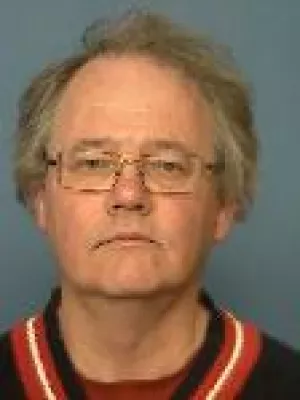
Göran Skog
Universitetslektor

14C emission from Swedish nuclear power plants and its Eeffect on the 14C levels in the environment
Författare
Summary, in English
The radionuclide 14C is produced in all types of nuclear reactors mainly by neutron-induced reactions in oxygen (17O), nitrogen (14N) and carbon (13C). Part of the 14C created is continuously released during normal operation as airborne effluents in various chemical forms (such as CO2, CO and hydrocarbons) to the surroundings. Because of the biological importance of carbon and the long physical half-life of 14C, it is of interest to measure the releases and their incorporation into living material.
The 14C activity concentrations in annual tree rings and air around two Swedish nuclear power plants (Barsebäck and Forsmark) as well as the background 14C activity levels from two reference sites in southern Sweden during 1973-1996 are presented in this report.
In order to verify the reliability of the method some investigations have been conducted at two foreign nuclear sites, Sellafield fuel reprocessing plant in England, and Pickering nuclear generating station in Canada, where the releases of 14C are known to be substantial. Furthermore, results from some measurements in the vicinity of Paldiski submarine training centre in Estonia are presented.
The results of the 14C measurements of air, vegetation and annual tree rings around the two Swedish nuclear power plants show very low enhancements of 14C, if at all above the uncertainty of the measurements. Even if the accuracy of the measurements of the annual tree rings is rather good (1-2%) the contribution of 14C from the reactors to the environment is so small that it is difficult to separate it from the prevailing background levels of 14C. This is the case for all sampling procedures: in air and vegetation as well as in annual tree rings. Only on a few occasions an actual increase is observed. However, although the calculations suffer from rather large uncertainties, the calculated release rate from Barsebäck is in fair agreement with reported release data.
The results of this investigation show that the effective doses to man related to the releases of 14C from the Swedish light-water reactors at Barsebäck and Forsmark are very low, especially compared to the situation at other nuclear installations, such as the fuel reprocessing plant at Sellafield, England, and the heavy-water reactors at Pickering nuclear generating station, Canada.
Lund/Malmö February 2000
The 14C activity concentrations in annual tree rings and air around two Swedish nuclear power plants (Barsebäck and Forsmark) as well as the background 14C activity levels from two reference sites in southern Sweden during 1973-1996 are presented in this report.
In order to verify the reliability of the method some investigations have been conducted at two foreign nuclear sites, Sellafield fuel reprocessing plant in England, and Pickering nuclear generating station in Canada, where the releases of 14C are known to be substantial. Furthermore, results from some measurements in the vicinity of Paldiski submarine training centre in Estonia are presented.
The results of the 14C measurements of air, vegetation and annual tree rings around the two Swedish nuclear power plants show very low enhancements of 14C, if at all above the uncertainty of the measurements. Even if the accuracy of the measurements of the annual tree rings is rather good (1-2%) the contribution of 14C from the reactors to the environment is so small that it is difficult to separate it from the prevailing background levels of 14C. This is the case for all sampling procedures: in air and vegetation as well as in annual tree rings. Only on a few occasions an actual increase is observed. However, although the calculations suffer from rather large uncertainties, the calculated release rate from Barsebäck is in fair agreement with reported release data.
The results of this investigation show that the effective doses to man related to the releases of 14C from the Swedish light-water reactors at Barsebäck and Forsmark are very low, especially compared to the situation at other nuclear installations, such as the fuel reprocessing plant at Sellafield, England, and the heavy-water reactors at Pickering nuclear generating station, Canada.
Lund/Malmö February 2000
Avdelning/ar
- Kärnfysik
- Fysiska institutionen
- Medicinsk strålningsfysik, Malmö
- Kvartärgeologi
Publiceringsår
2000
Språk
Engelska
Publikation/Tidskrift/Serie
Report 06/00 LUNDFD6/(NFFR-3079)/1-44/(2000) Lund 2000
Fulltext
- Available as PDF - 295 kB
- Download statistics
Dokumenttyp
Rapport
Förlag
[Publisher information missing]
Ämne
- Other Clinical Medicine
Status
Published
Forskningsgrupp
- Medical Radiation Physics, Malmö

